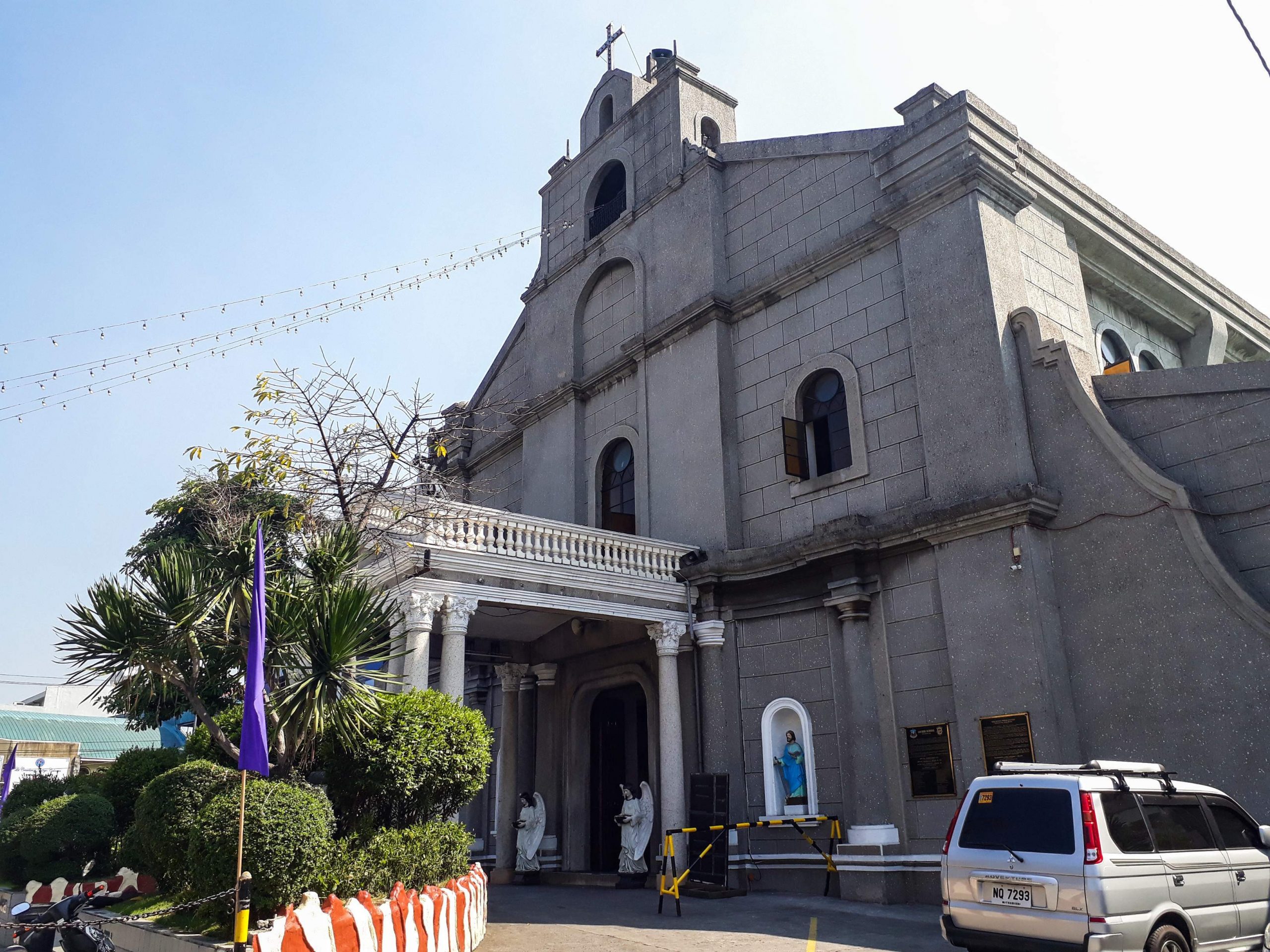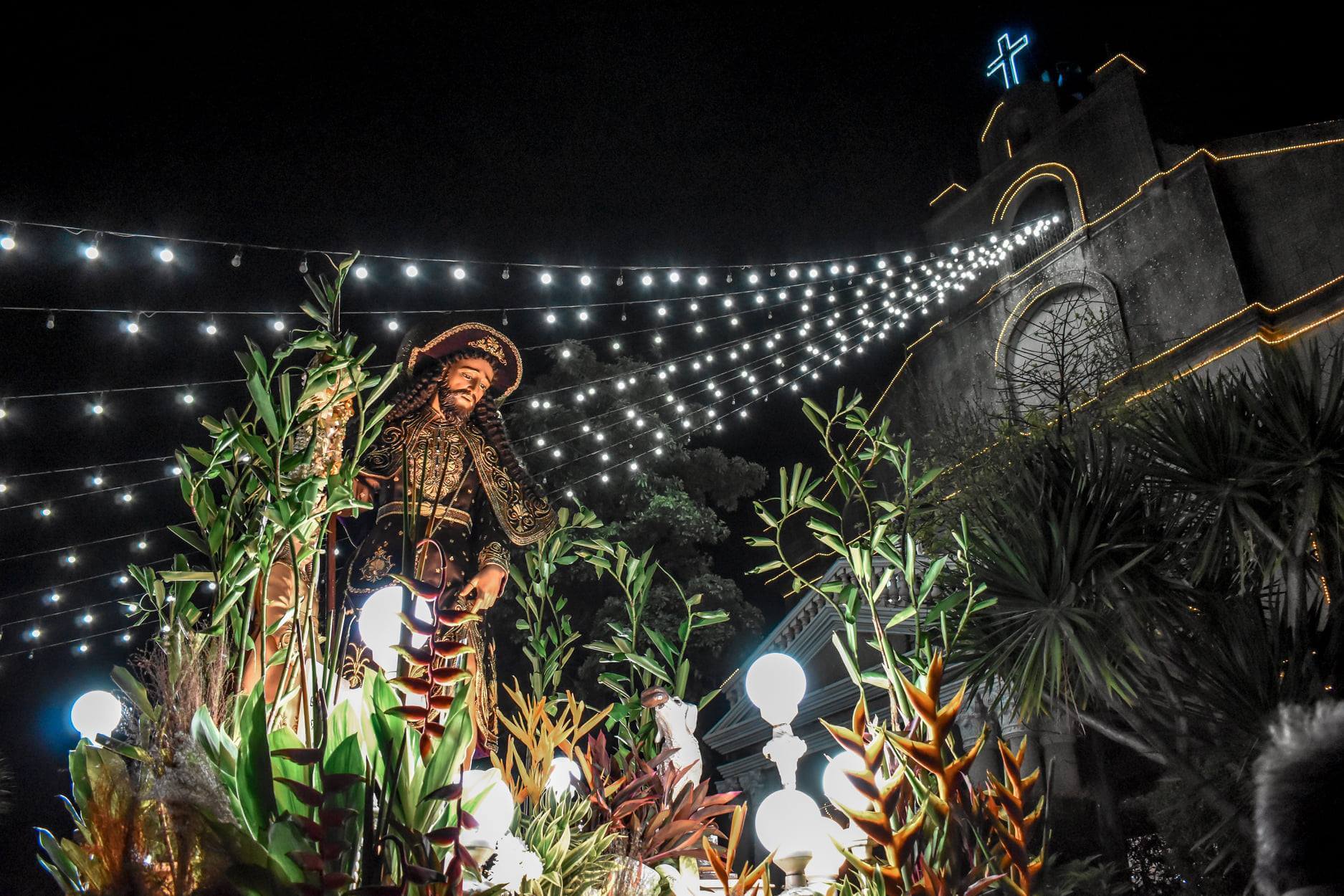










THE SAN ROQUE CATHEDRAL, the seat of the Roman Catholic Diocese of Kalookan, blossomed from a small chapel into a beacon of faith for her community. The construction of the chapel started in 1765 on a part of Kalookan called Libis Aromahan (Sitio de Espinas), led by the Parochial Vicar of Santo Niño de Tondo Parish, Rev. Fr. Manuel Vanquero. He gave the community two statues, that of San Roque and the Nuestra Señora de la Nieva. These statues are believed to be brought by the Augustinian Recollects from Talavera, Spain.
On April 8, 1815, the Archbishop of Manila, Most Rev. Antonio de Zulaivar, canonically erected the San Roque Parish, separating them from the Santo Niño de Tondo Parish. Rev. Fr. Manuel de San Miguel was their first parish priest, as the building was transfered from Libis Aromahan to Paltok, the church’s present site. In 1819, Rev. Fr. Vicente de San Francisco Xavier paved the way for the construction of a bigger church, which was completed in the administration of Rev. Fr. Cipriano Garcia.
Sometime in 1869, San Roque Parish ceased to be considered a parish because they could not give the proper “Tributas y numero de los aimas” as prescribed by the Sede Vacante Archbisphoeric de Manila. But with the election of Archbishop Jose Arangueren in 1892, San Roque was restored to their status as a parish.
San Roque Parish also played an essential piece during the Revolution against the Spanish regime, the American rule, and later on, the Japanese occupation. The parish’s church yard served as a meeting place for members of the Katipunan who marched to Balintawak and launched their attacks against the guardia civil. In 1899, General Antonio Luna sought refuge inside the church at the peak of the Filipino–American Revolution. It was also used in the Second World War when Col. Frederick Funston Regiment made the church in kabalyerisa.
After the war that harmed several communities, Rev. Fr. Victor Raymundo initiated the reconstruction of the church, with the Confradia de Sagrado de Corazon de Jesus leading the way. After Fr. Raymundo’s term, several parish priests, namely Rev. Frs. Eusebio Carreon, Pedro Abad, and Pedro Vicedo contributed to the task of revitalizing the old building. In 1977, Rev. Msgr. Augurio Juta planned for a bigger church, which never materialized because of a sudden change of assignment. It was only in the mid–1980, in the tenure of Rev. Msgr. Boanerges Lechuga’s term that the renovations and restorations were completed.
Amidst all the pain that has stormed the San Roque Parish, God had a special way of rewarding His church. During the year 2000, a year of joy for the whole Roman Catholic Church, the parish was declared as one of the Jubilee Churches in the Archdiocese of Manila by the Archbishop, His Eminence Jaime L. Cardinal Sin. On June 28, 2003, three years after, the greatest gift yet was given as His Holiness Pope John Paul II, through his Apostolic Letter “Quoniam Quaelibet”, created the Diocese of Kalookan, consisting of Kalookan City (South), Malabon City, and Navotas City, which elevated San Roque Parish into “the level and dignity of a cathedral.”
Today, San Roque Cathedral stands not only as a place for worship for thousands of people in the heart of Kalookan City, but also as a concrete reminder that through the years, even in the midst of adversities, we can always rely on God’s providence, just like San Roque did. God, through unshakeable faith in Him, would always send us the dog with the bread on its mouth.
San Roque
SAN ROQUE WAS BORN TO A WELL–OFF FAMILY FROM THE CITY OF Montpeller, France in the year 1295. Although he had a happy childhood with his parents who taught him the basics of life, aptitude and religion, he was orphaned at a young age of twenty.
When San Roque inherited the possessions of his parents, he, out of innate and preferential love for the poor, distributed it unto the people who need it more. After doing so, he lived the life of a beggar as he journeyed towards Rome. As he traveled, he was forced to stop on Tuscany for the reason that a plague depleting the population.
When he was informed of the condition of Piacenza, wherein the same disease spreads, he immediately presented himself to aid the poor and the inflicted. After some time, he also made contact with the illness, making him vulnerable as ever.
He was not given the chance to be cured, because of the apparent sickness engulfing him. The lack of respect and kindness from the upper society he once belonged to made him seek sanctuary in the woods. He survived in a day–to–day basis while living in a hut, on water from a nearby spring and on bread that is given miraculously.
It was God, who provided San Roque the food for his everyday consumption, through the dog that delivers the bread from his rich master. But the dog’s owner noticed the unnatural, habitual actions of the dog, which carries a piece of bread in his mouth everyday, and goes off to the woods. One day, he followed the dog in order to know where the food is brought. At the moment the rich man saw San Roque, his heart was moved with pity for his stature. He opened his house for the poor man, and at the same time, gave him medications. Through all the pain, San Roque was able to return to his hometown in France.
But he came back in his own country unknown, unaccepted, and unimportant. He was even mistaken to be an enemy of their state. Worse, the judge that was his friend had him convicted when he was not able to explain his side.
San Roque experienced numerous struggles in his life behind bars. Yet, amidst the vast difficulties, he offered his life to God through the acceptance of His will.
San Roque died at a tender age of thirty–two. But soon after his death, several stories of miracles were told, both during and after his life. People say that he had cured a lot of people with different kind of illnesses. Even some say that, San Roque’s guidance and constant mediation between us and God does wonders, even in the middle of several crises.
It is only fit for a community beset with political, social, economical and environmental woes to have San Roque as a patron. In perilous times, we can always ask him to pray for us to the God.
Nuestra Señora De Nieva
IT WAS IN 1380 THAT A MIRACULOUS IMAGE OF THE VIRGIN MARY appeared to a shepherd who goes by the name of Pedro de San Buenaventura. It is unknown if this certain Pedro de San Buenaventura is his real name, or if this was a pseudonym.
One day, as he was tending his livestock, the Virgin Mary ordered her through a voice to visit the Bishop and ask him to tell him about the image of Mary on the rocks. Pedro immediately went to church, but the See did not believe in him right away.
As Pedro, the Bishop, and the whole town went to see the image, they sensed a fragrance that was incomparable to any scent. Everyone was amazed with the miracle that transpired. After which, they placed the image inside the church for safekeeping. Up to now, the image remains flawless from any impending damages.
The Virgin’s apparition was first called as Virgen de la Soterrana, because it was obtained from the land. Since then, several miracles have taken place through the Nuestra Señora de la Nieva. These wonders were not only seen in times of turmoil, nor only in times of distress but in times of peace, a peace in the son of the Señora.
BAPTISM
Sundays: 11: 30 AM
Monday – Saturday (by schedule): 11: 00 AM
CONFESSION
Wednesdays & Fridays: 6: 45 PM
CONFIRMATION
Every 4th Saturday
Seminar: 8: 00 AM
Rites: 9: 00 AM
MATRIMONY
Mondays to Saturdays (by Appointment)
- (8)287-3693
- [email protected]
- https://www.facebook.com/SRCDoK/

San Roque Cathedral
Established: April 8, 1815
Fiesta Day: August 16
Address: A. Mabini Corner 10TH Ave. Streets, Caloocan City
Bishop: Most Rev. Pablo Virgilio S. David, D.D.
Rector: Rev. Fr. Jeronimo Ma. J. Cruz
Parochial Vicar: Rev. Fr. Jay Arvin M. de Leon
Parochial Vicar: Rev. Fr. Philippe Garcia

Nuestra Señora de Nieva de Caloocan - The Queen and Mother of Caloocan City
In the busy city of Caloocan, known for its role in history during the Philippine Revolution and one of the most progressive cities of the National Capital Region, lies one of the most notable place where the faith is kept alive for centuries, the Cathedral of San Roque, the Seat of the Diocese of Kalookan. The Cathedral of San Roque in Caloocan houses two of the most important Patrons of the City, the titular Patron St. Roch of Montpellier and the Queen and Mother of the City, Nuestra Señora de Nieva de Caloocan. https://pintakasi1521.blogspot.com

San Roque de Caloocan - The Patron of Caloocan City
The modern and progressive city of Caloocan is very fortunate for the city was dedicated to two powerful intercessors, the Nuestra Señora de la Nieva de Caloocan and the famed Patron against sickness and pestilence - St. Roch of Montpelier. Of all the images of San Roque in the country, arguably that of San Roque in Kalookan Cathedral is one of the most recognizable in the country in modern times. Due to the popularity and importance of San Roque to the people of Caloocan, the Holy See chose his humble abode to be the Seat of the Diocese of Kalookan where he became the watchful patron of the diocese.